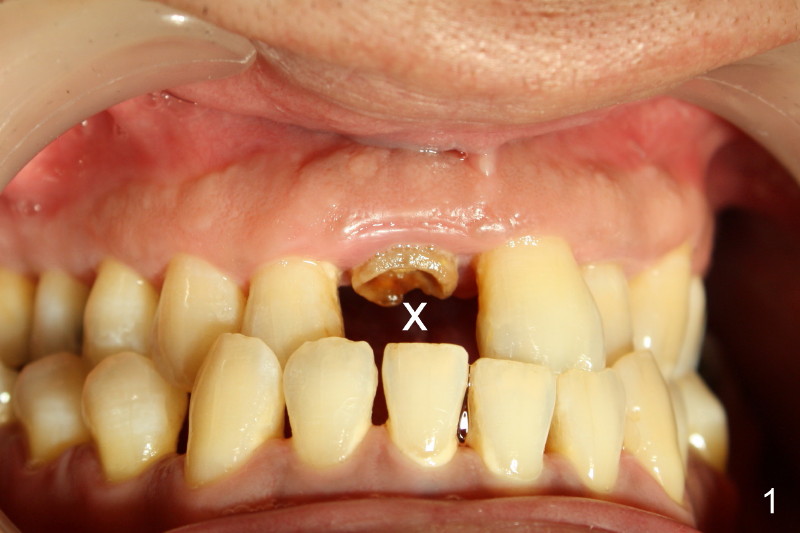
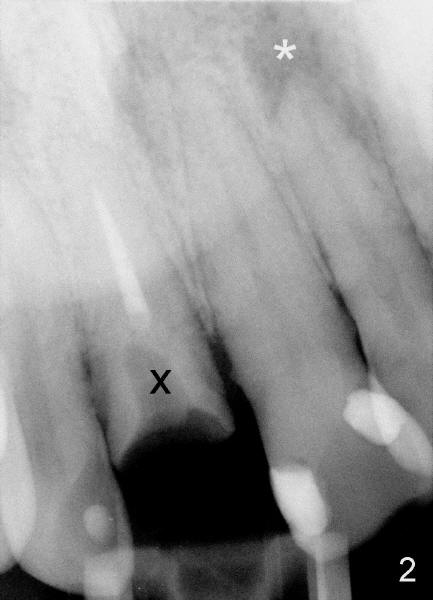
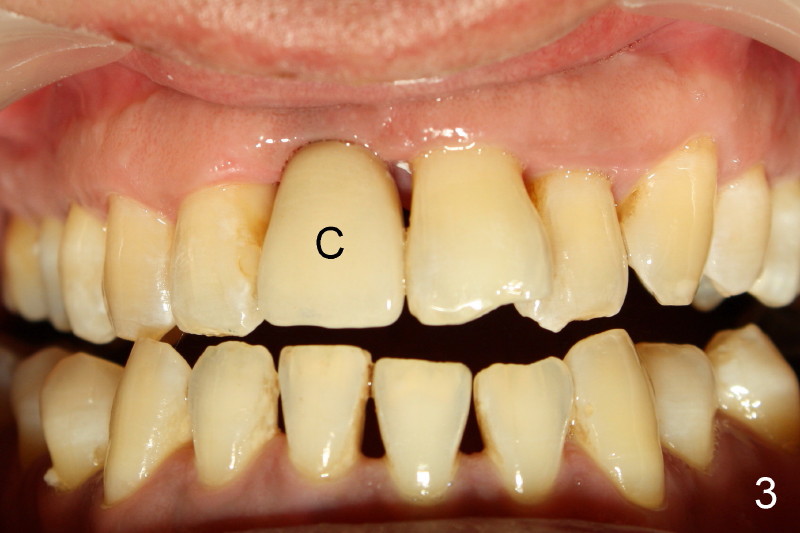
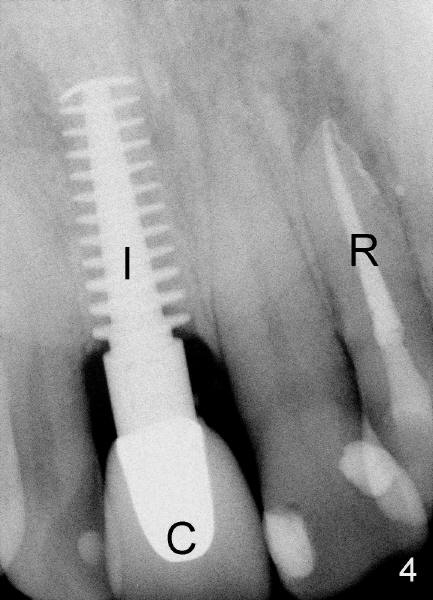
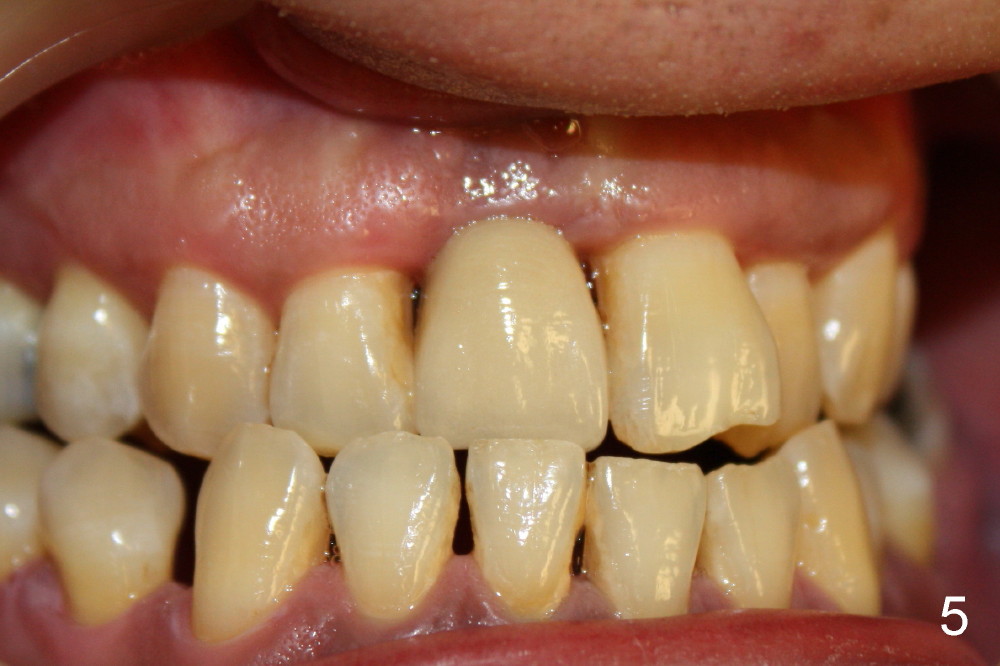
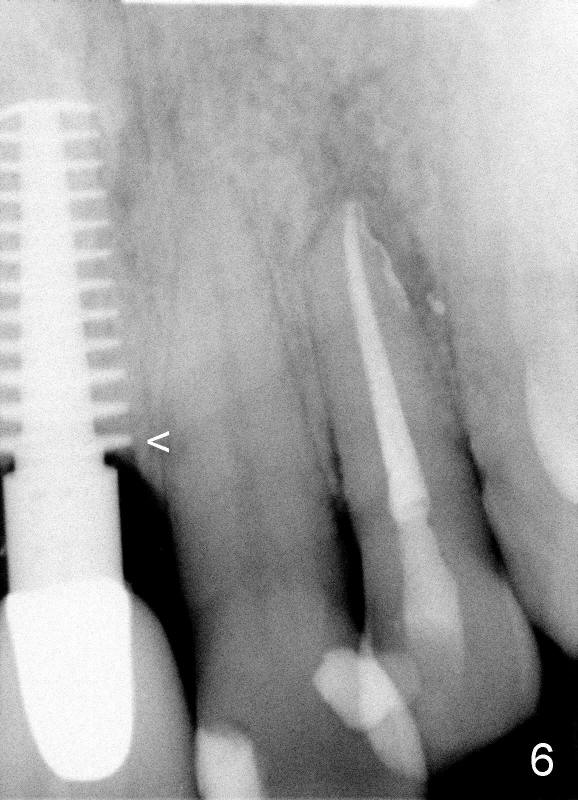
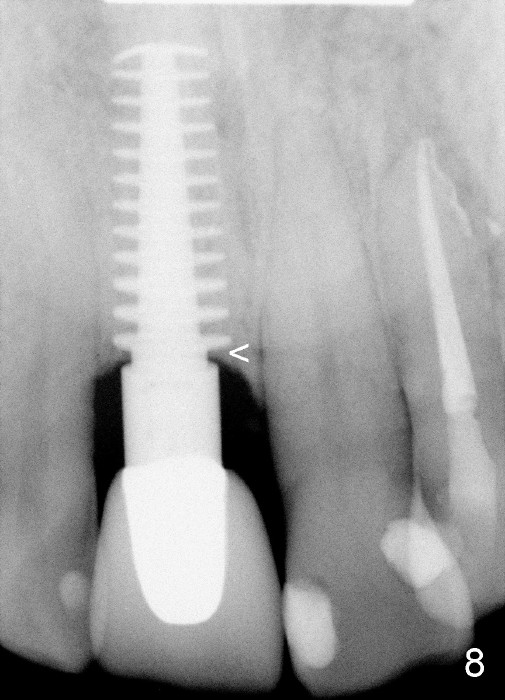
 |
 |
 |
 |
 |
 |
 |
Implant: New Part of Our Body
Mr. Pan must be in his late thirties. He is a good husband and a loving father. Mr. Pan has had a lot of dental problems since childhood. He has cross bite: upper teeth being behind bottom ones. He does not care about it. His critical issue is that one of his front teeth is broken down the root (Fig.1, 2 X). The tooth is beyond repair and should be extracted and replaced with an implant-supported crown (Fig.3 C; Fig.4 I).
During 6-month implant healing period, the neighboring tooth has root tip abscess (infection, Fig.2 *), which is taken care of by root canal (Fig.4 R).
When the permanent crown (Fig.3,4 C) is finally seated over the implant (Fig.4 I), he is so pleased. Everything is new and strong. He is no longer afraid that the crown may come out unexpectedly as before. He trusts modern science that his implant has become a new part of his body. It is solid. It binds to his jaw bone tightly. He can chew normally with the implant-supported crown. There is no difference between this so-called fake tooth and real ones.
Happiness starts now. His wife is sure to feel satisfied with the new tooth. In a few day, he is going to his home country to bring his four-year-old son to live in the United States.
Ten months after implant crown cementation, Mr. Pan returns to our office for cleaning with his lovely son. The implant tooth remains stable in his mouth (Fig.5). X-ray reveals that the bone around the implant (Fig.6 <) appears more solid than before (as compared to the same area of Fig.4).
Mr. Pan returns for follow up one year later. The bone has grown into the thread of the implant (Fig.8 <).
Xin Wei, DDS, PhD, MS 1st edition 04/27/2012, last revision 04/10/2014